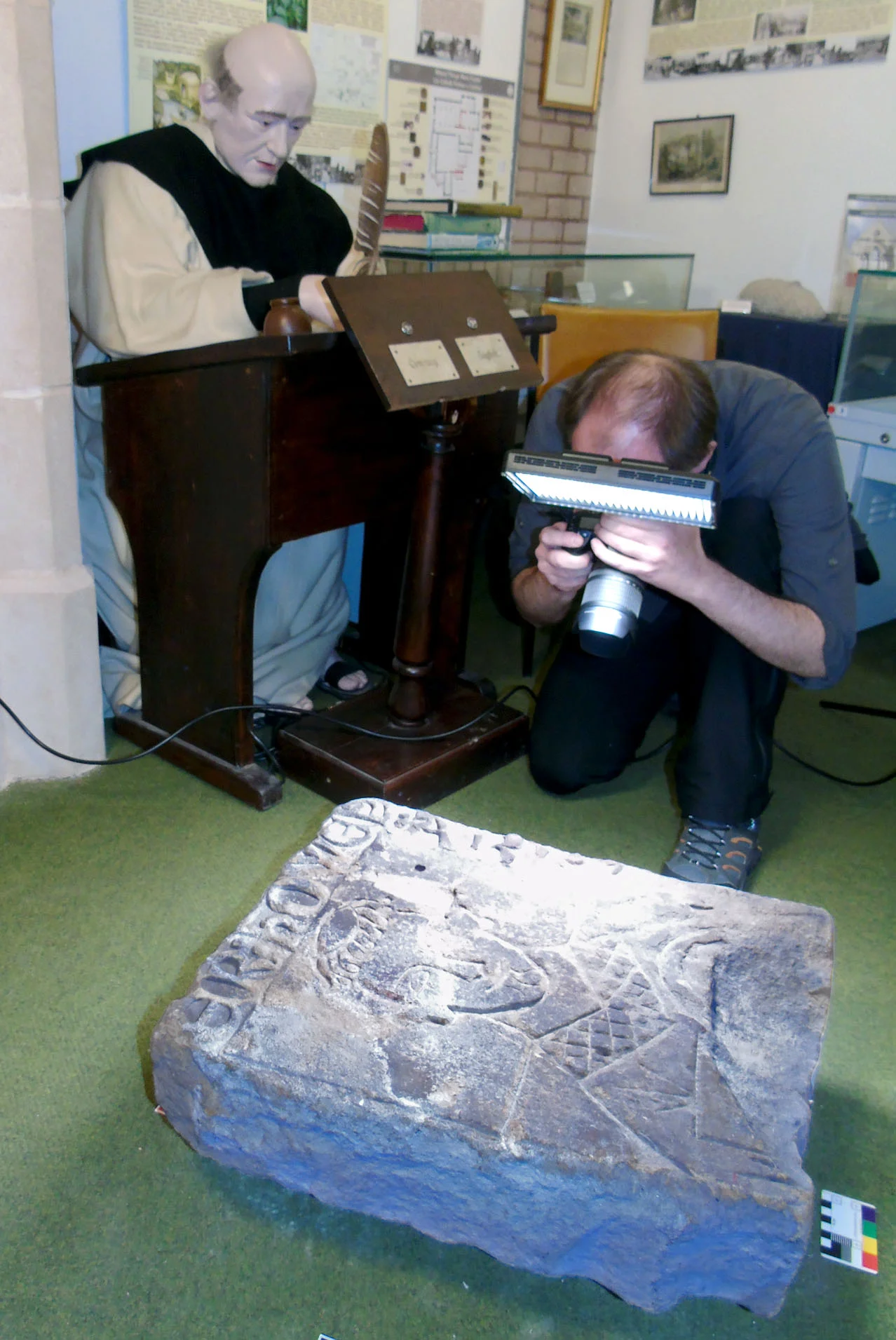The Smiling Abbot: 3D model and photography
I was in Llangollen Museum this week, working with Professor Howard Williams to record an intriguing medieval sculpted stone, The Smiling Abbot. It likely dates to the fourteenth century and is thought to depict Abbot Hywel (‘Howel’), an abbot of the nearby Cistercian house of Valle Crucis.
Left: Photographing the 'Smiling Abbot' while John Porthlock, the animatronic monk, looks on (Photo: Howard Williams)
I took with me specialist lighting for both still photography and photogrammetry, but it was still something of a challenge to work in a confined space in one corner of the Museum.
Above: A photograph of the Smiling Abbot, captured using oblique light (Photo: Aaron Watson)
Above: A three-dimensional model of the Smiling Abbot. Click on the button to load the model and navigate. Click on the numbered labels for information about the sculpture. The labels can be switched off in the menu at the bottom right (Model: Aaron Watson)
The photographs and 3D model will constitute a part of the archival record of the stone. The images will also be featured in a forthcoming paper which interprets the stone and its significance:
Williams, H., Smith, G., Crane, D. and Watson, A. Forthcoming. The Smiling Abbot: Rediscovering a Unique Medieval Effigial Slab. Archaeological Journal 175, for 2018.
Left: Professor Williams seizes the opportunity for a self portrait with the Smiling Abbot (Photo: Howard Williams)
Howard's own account of our work at Llangollen Museum can be found in his Archaeodeath blog.


